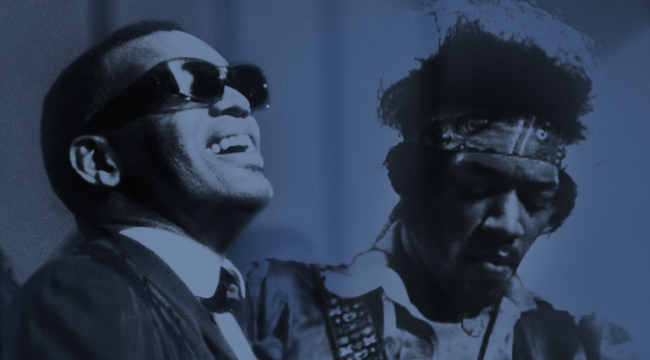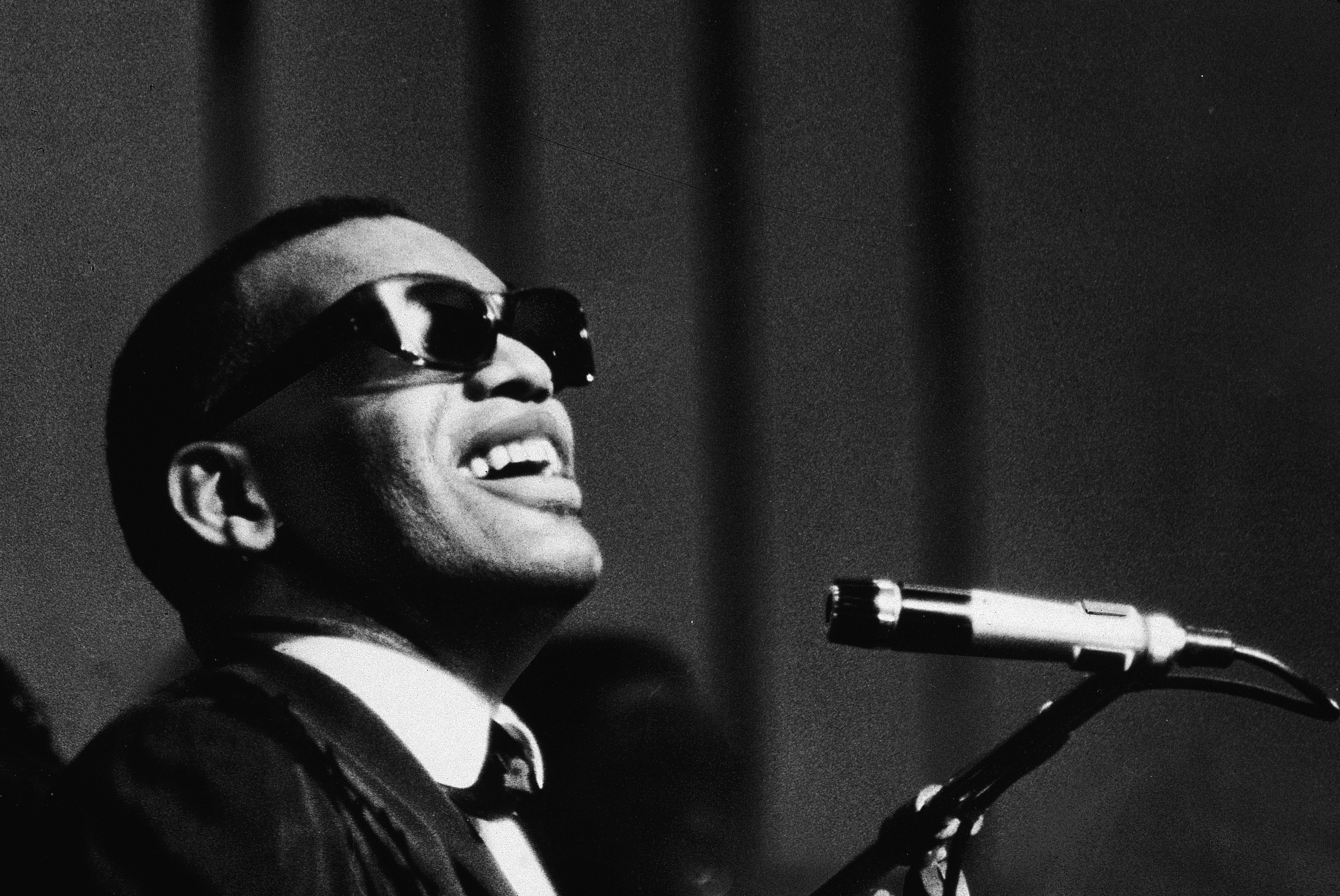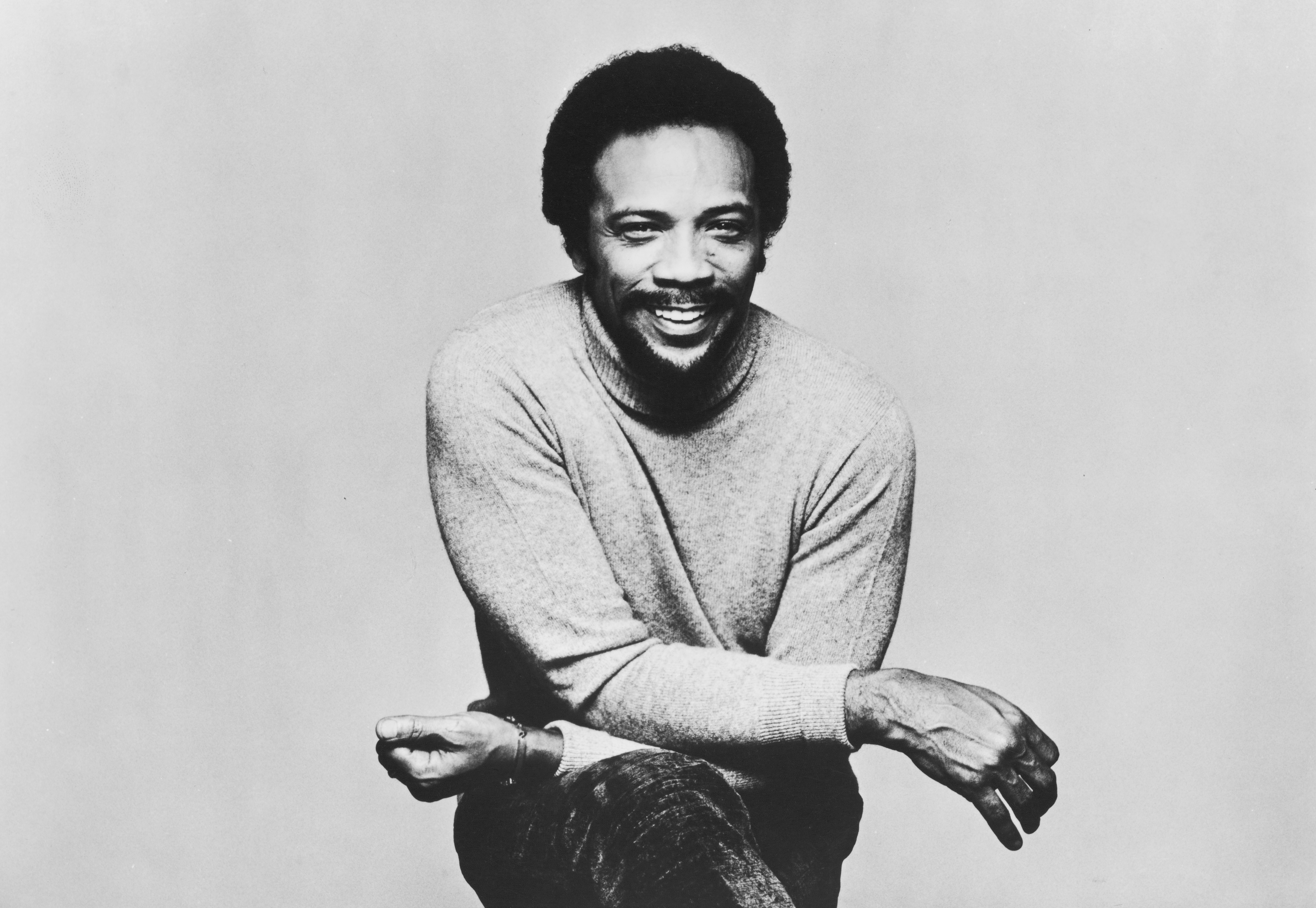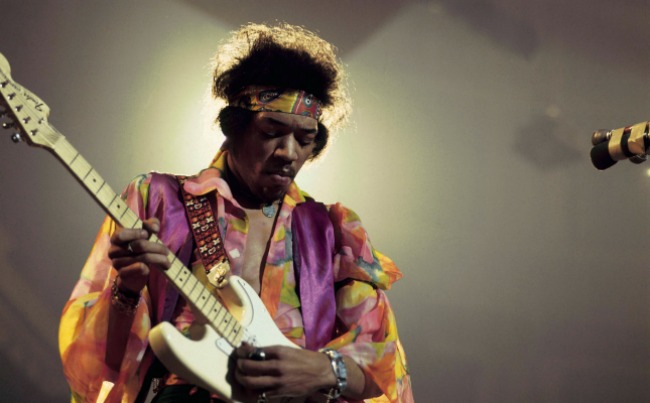
Though the guitar fuzz has faded and “grunge” has spread far and wide from its launch spot, music remains a big part of Seattle’s identity. But the history of the “Seattle Sound” begins long before Green River’s “Come On Down” and the “Deep Six” compilation and it’s a lot more diverse, kickstarted in the 1940s around a premier jazz and blues scene that attracted greats like Count Basie, Duke Ellington, Nat King Cole, Charlie Parker, and so many more. It’s also all connected and passed down like a trade secret from one legend to the next.
Ray Charles left the south and went to Seattle to sing the blues, and, subsequently, invented soul. His best friend was a young Quincy Jones who spent rainy day after rainy day honing his skills and writing music that eventually changed music forever. Jones’ neighbor, Dave Lewis blended the soul, blues, and jazz of his youth and became the granddaddy of the Northwest Sound. Lewis went on to give Jimi Hendrix his first shot at performing on stage and a place to practice and plug in his electric guitar. And Hendrix would inspire locals like Heart, the ’70s metal/punk of the UMen that inspired bands in the ’80s, and what became grunge. And it’s all tied together by determination, ambition, a few coincidences, and the Emerald City.
“Let Me Go There And See What I Can Do”

In the late 1940s, Ray Charles was a Florida teenager who went by the name of R.C. Robinson whose mother had recently passed away. All he wanted to do was make music, but Florida was proving too difficult a place to follow that dream. He wanted out, so Charles asked his bandmate and guitarist Garcia “Gosady” McGee where the furthest possible place from from Florida was. According to Charles’ autobiography, McGee “took a map and went diagonal across it, and there was Seattle sittin’ up in the Northwest, and I said let me go there and see what I can do.”
In his autobiography Brother Ray: Ray Charles’ Own Story, Charles recalls that 30 minutes after he talked his way past the bouncer at The Rocking Chair Club (which was in the midst of Talent Night), he had gone up on stage, banged out two songs, and earned a job offer on the spot from the club’s manager — he hadn’t even been in Seattle 48 hours at that point. Needless to say, the city recognized what a talent it had in the transplant immediately.
Charles’ old guitar buddy, McGee eventually followed Charles up to Seattle, and the two formed the McSon Trio (a mash-up of McGee and Robison), and began playing as many clubs and stages they could find. The trio was a hit; they drew attention from local promoters like Bumps Blackwell, who, according to Charles’ autobiography, helped them arrange gigs and broadened their audience by booking shows at white fraternities, which was far from common at the time, but certainly less scandalous than it would have been in the deep south.
Charles, who had come to Seattle on a restless five-day ride in the back of a bus (right by the noisy engine) due to segregation, was surprised by how desegregated Seattle already was when he arrived in March of 1948. The influx of black Americans who had come to the area to support the war effort, the return of black soldiers that had decided to stay in the Pacific Northwest, and immigrants who were fleeing strife in Asia and Europe helped to bring a cultural explosion to Seattle.
After gigs for the white population in the evening hours, Charles would work between 1 AM and 5 AM playing any show he could get into. In his autobiography, he further admits to using heroin once or twice a week and jamming with his favorite “cats” all night. He wrote that while he was always interested in getting high, the drug scene in the Northwest rivaled any thing else he’d experienced. “It was wild up there,” he wrote. “I saw more in a year than five years before that. I saw cats bringing in huge cereal bowls filled with weed. I saw oceans of coke and heroin. I saw folk drinking whiskey like water.” Charles adds that he was too poor to really get high that often, which he attributes to him not seeing “the ugly” side of the drug that cursed so many other Seattle musicians. Still, it took him 17 years and a trip to a medical facility to finally kick the habit later in life.
Charles and the McSon Trio became mainstays on the local club scene, landing a recurring 15-minute spot on KRSC radio, and eventually the honor of being on one of the first ever TV broadcasts on Seattle’s KRSC-TV (which later became KING Channel 5.) The next step was clear — make a record.
It’s unknown where in Seattle, exactly, Charles and his trio recorded a demo with two songs: “Confession Blues” and “I Love You, I Love You,” but the 78 was a local hit, and quickly got the attention of record execs, who swiftly sent the trio down to Los Angeles to record more of their songs. The first song Charles recorded was “Rockin’ Chair Blues,” in honor of his days toiling and jamming in Seattle’s jazz and blues clubs. It was Charles’ first real hit and his ticket out of town. But he left a willing and able accomplice behind.
The Eager Apprentice

Quincy Jones was drawn to music from a young age, often sneaking next door to play on his neighbor’s piano while still in Chicago before his family moved to Bremerton, Washington so his father could work in the Navy Yards. That work was the same thing that drew Dave Lewis, Sr. to the area. Incidentally, Lewis lived next door to Jones, who was thankful for a neighbor with a love of music, and Jones benefited greatly from Lewis’ offer to practice anytime.
After the war ended, both families moved across the Puget Sound to Seattle in search of stable work. In school, Jones excelled in band and played all the instruments he could get his hands on. By the time he was 14 he was playing gigs by night for seven dollars a pop at the local Seattle YMCA before heading to the Palomar or Moore Theatre to watch whatever big band was in town that week.
Jones ended up attending Garfield High School as a sophomore and soon formed a band with fellow students Charles Taylor and eventual jazz and blues legend Ernestine Anderson. The band also got the attention of Bumps Blackwell, who took the teenagers under his wing and coined their name, The Bumps Blackwell Junior Band.
It was during these days that Jones started hanging with Charles, who was two years his senior. Soon, the two became almost inseparable.
“Quincy had a loving style about him,” Charles said of Jones in the Jones autobiography, Q: The Autobiography of Quincy Jones. “He was genuine. He was infectious, man. We hit it off right away.” Charles added that Jones became obsessed with the more independent life that he was living. That was only natural since Charles was only 16 and already living in his own place with “three suits,” a piano, and plenty of female companionship.
Jones didn’t limit his apprenticeship to the lessons he learned from Charles, either. He was also fortunate enough to get some vital instruction from his idol, Clark Terry, who was touring with Count Basie. Jones hung around after the Basie show and continually pestered Terry for lessons until he finally relented, somehow managing to squeeze in that time between school, sleep, and playing with the Bumps Blackwell Junior Band.
Coming out of high school, Jones landed a full scholarship to Seattle University to study music, but it wasn’t a great fit and neither was Berklee College of Music in Boston, where he studied for another semester. Jones did meet Lionel Hampton, though, and Hampton remembered him from his Seattle gigs and invited him to join his tour, allowing Jones the chance to see the world.
In the years that would follow, Jones would work out of New York, Paris, and Los Angeles, becoming a vital musician, the producer on hit records like Michael Jackson’s Off The Wall, Thriller, and Bad albums, a composer with 32 film scores and a discography that reads like a who’s who of pop culture from the ’50s up until the present day. He even helped expose the world to Will Smith as the producer of The Fresh Prince Of Bel Air.
Though their teenage years didn’t yield any recorded material, Jones also collaborated with Ray Charles three times over the course of their careers on 1959’s The Genius Of Ray Charles, 1961’s Genius + Soul = Jazz (1961), and 1989’s decidedly funky time capsule of the ’80s, Back On The Block.
Blackwell also made it out of Seattle around the same time as Jones, moving down to LA where he started the careers of Little Richard, Sam Cooke, and the group Sly And The Family Stone. He co-wrote and produced a few of their first hits (which are now iconic rock standards) and successfully promoted their acts to super stardom.
With all that talent heading out of town at around the same time you’d think that the Seattle music scene had been dealt a furious blow, but we shouldn’t be so quick to forget about Dave Lewis, Jr.
Dave Lewis, Jimi Hendrix, And The Ever Present Influence

The son of Quincy Jones’ neighborhood piano hookup, Dave Lewis, Jr. was five years younger his junior but still eagerly tagged along with Jones and Ray Charles, doubtlessly idolizing them as they carved their niche in the late ’40s Seattle jazz club scene.
Lewis Jr., like Jones, Ernestine Anderson, and later, Jimi Hendrix, went to Garfield High School and was part of the school’s band. But he got his advanced education in music performance, theory, and composition by informally studying under the two burgeoning masters, and was already playing their old haunts in his early teens, as well as doing nightly gigs at Seattle’s hottest R&B room, The Birdland on Madison Street by the time he graduated. He was another blazing teenage force of nature on the Seattle scene, like Charles had been years earlier, except Davis wasn’t trying to play up to the adults in the room, he was making space for a teen-orientated R&B scene years before a million girls were screaming for Elvis Presley.
Paul de Barros, the Seattle Times jazz critic, hailed Dave Lewis as “a ferociously swinging blues-rocker who wailed, chattered, churned, stuttered, rippled, and roared over the B-3 keys [rock organ] with carefully calibrated riffs.” Local saxophone player Luther Rabb (a member of Jimi Hendrix’s first band and later Santana and WAR) told author Mary Willix in her book Jimi Hendrix, Voices From Home that “the Dave Lewis combo was more advanced musically than any other Seattle group. They knew all about intervals and overtones and music theory. They had the fewest guys and they made the biggest sound.” Rabb went on to call Lewis “the Godfather of the Seattle Sound.”
Lewis arranged, composed, sang, played multiple instruments, and created the vibe for all his shows. It was a scene that was rooted in the local culture; Peter Blecha wrote in an essay on Dave Lewis that “by the summer of 1956 the Combo was being hailed as ‘The Northwest’s Greatest Rock ‘n’ Roll Band.'”
Lewis’ band was a sensation and he was fast becoming a local icon, but despite that, years later, we know that Lewis and his iconic organ are largely unknown to most people these days outside the Seattle area. His music is extremely rare and hard(ish) to find even on streaming services like Spotify. Yet, his legacy lives on through the music he helped create and through the impact he had by carrying on his old man’s tradition of providing a place for young musicians to come and practice any time, day or night. That legacy also continues because of the music made by one kid that kept showing up at his door: a very poor and desperate Jimi Hendrix.
In the Hendrix biography, Room Full Of Mirrors, author Charles R. Cross lays down the importance of the Lewises. “The Lewis family — with keyboardist Dave Lewis and father Dave Lewis Sr. — inspired many,” he wrote. “The Lewis family provided a supportive environment where kids were told that being creative was a positive thing. This informal school became Jimi’s higher education.”
Hendrix eventually dropped out of school and went all in on his music, forming a band called The Velvetones with Luther Rabb. They were good enough to land a nightly gig at The Birdland where Dave Lewis and his Combo held court, but Lewis thought Hendrix’s spectacular guitar playing was hindered by his cover band.
In Cross’ biography, Lewis says that Hendrix was way too out there for the times, “He’d play his wild stuff, but the people just couldn’t dance to it. They’d just stare at him.”
Hendrix eventually got out of Seattle and joined the army. After a discharge, he ended up as a backing guitarist in Little Richard and Sam Cooke’s bands. Little Richard was still being managed by Bumps Blackwell, and it can’t be a coincidence that a local Seattle kid got his break from a man who made his name supporting local Seattle talent.
Because that’s what it was about: Connections. Both in life and in the music.
You can draw a straight line from Ray Charles exploding onto the scene as a 16-year-old and helping an even younger Quincy Jones transition jazz and blues to include soul and R&B, all with arrangements they likely figured out together in Dave Lewis Sr.’s basement or Charles’ living room. Jones was shadowed by an even younger Dave Lewis who took that R&B and soul and infused it with rock and roll by rearranging old standards yet again. And Lewis who, in turn, was shadowed by a young Jimi Hendrix, surely helped to inspire Hendrix to take rock and roll to new heights and new audiences who then splintered off in any number of ways. But they all carried the past and the power of their influences with them.
In a hundred years, people will still talk about the way Jimi Hendrix commanded a guitar and the way Ray Charles’ pained voice still feels like it can heal you. People will talk about it and they will try to emulate it and then they’ll go off and build upon those sounds that, by virtue of their goodness and their trueness, have become institutions and a part of the soul of music. Sounds that owe a lot to Seattle and the Pacific Northwest, a place whose musical history extends far before and far beyond its “grunge” moment.






